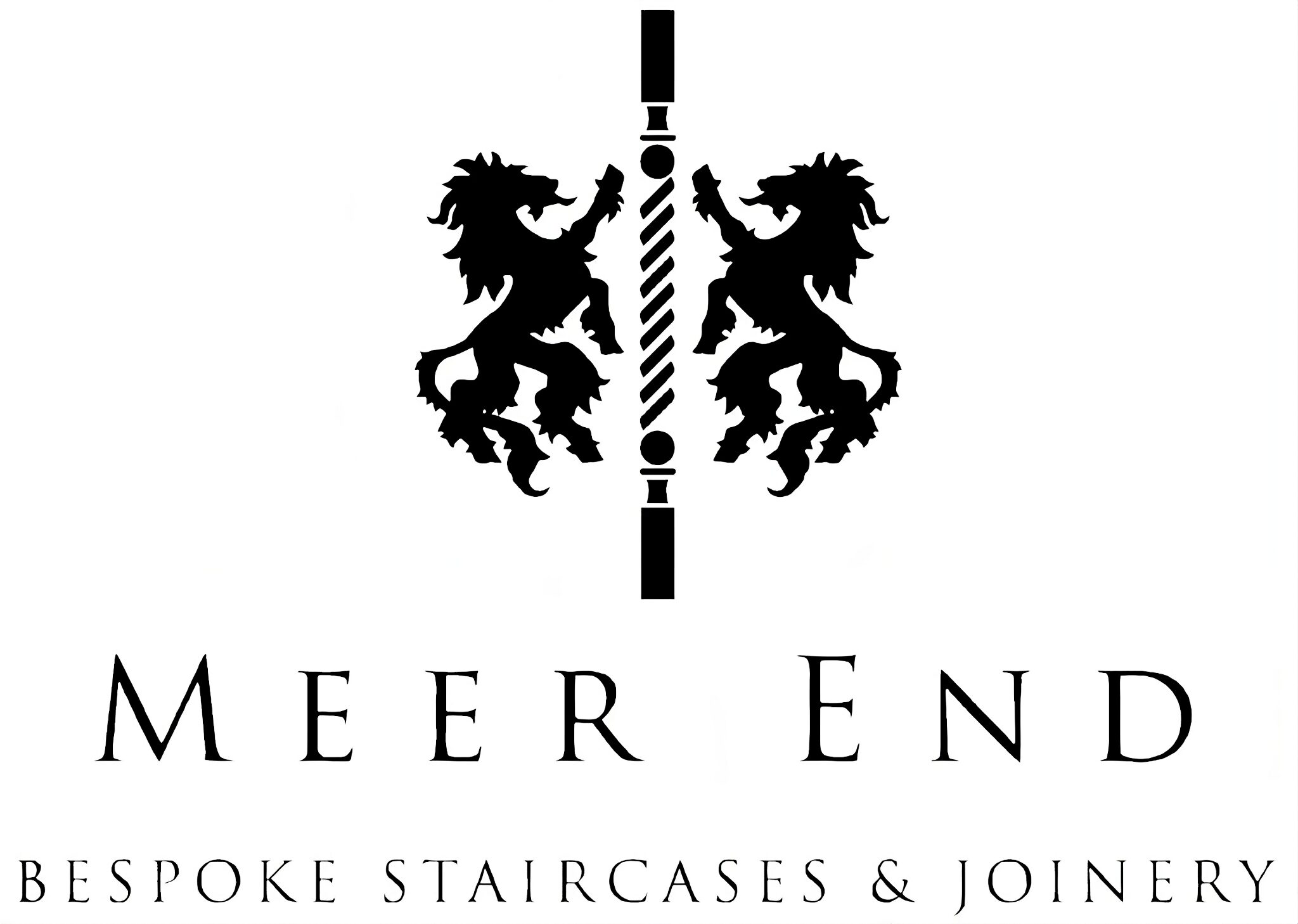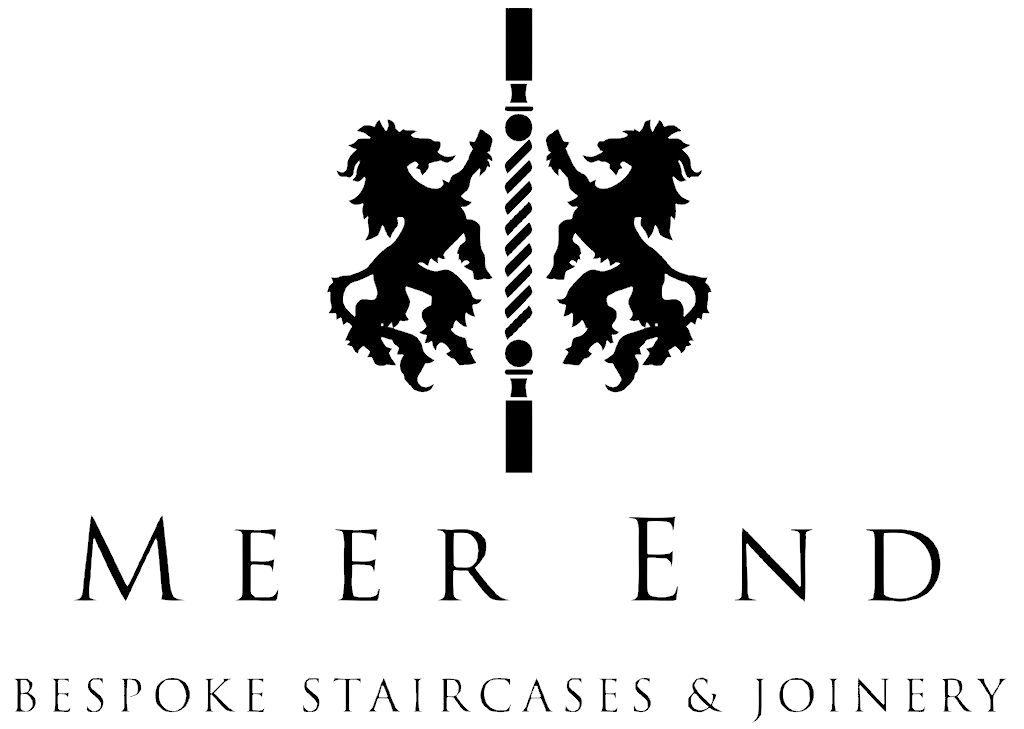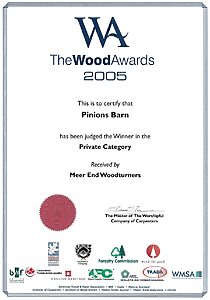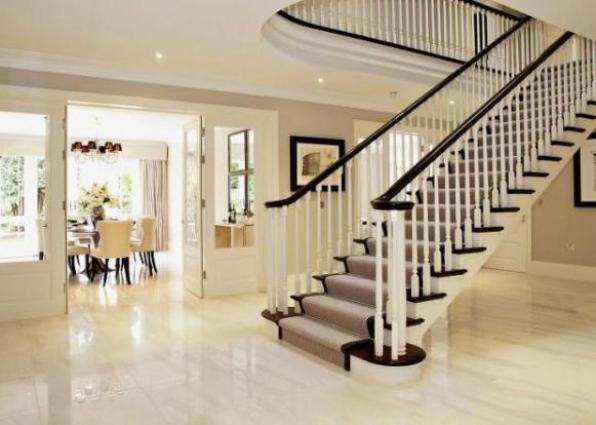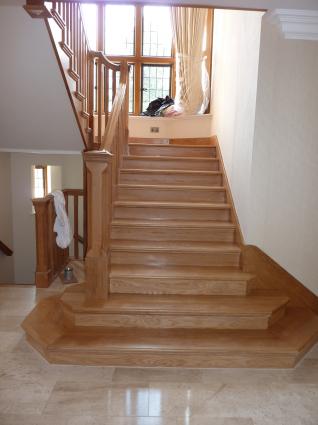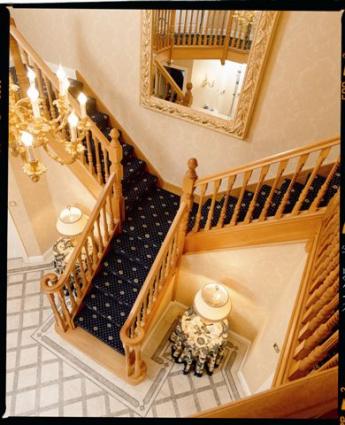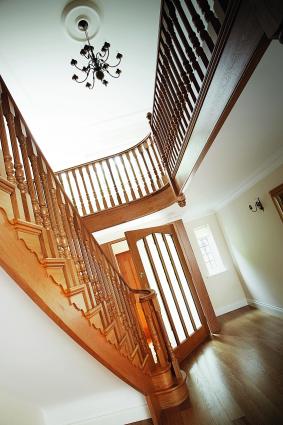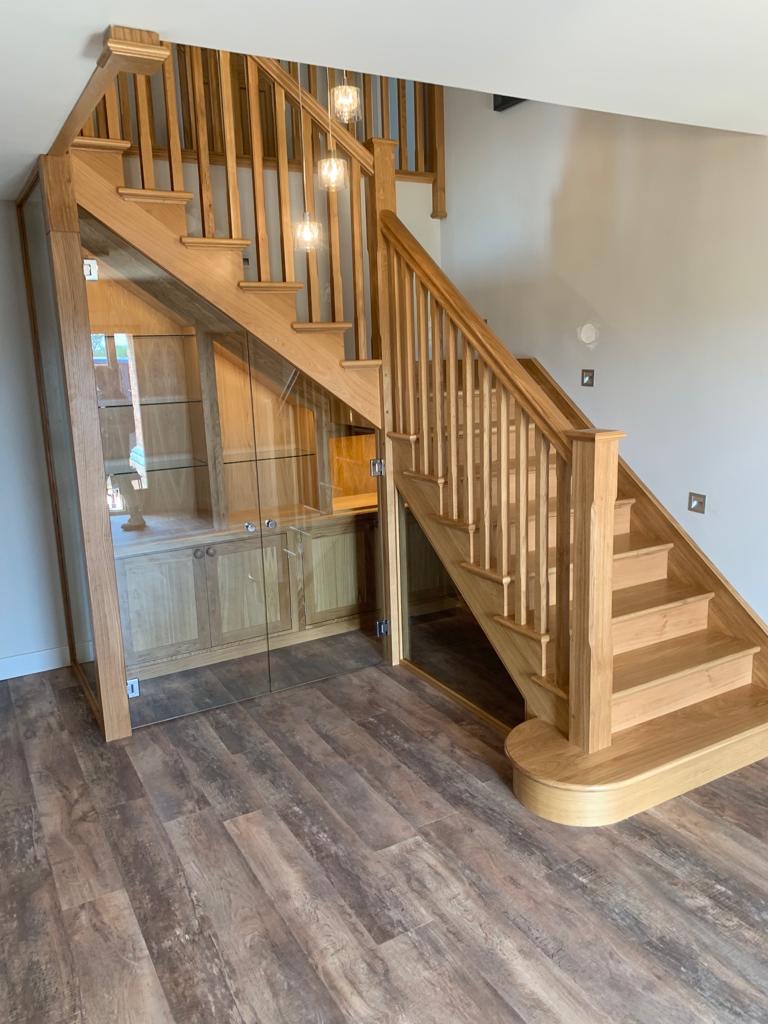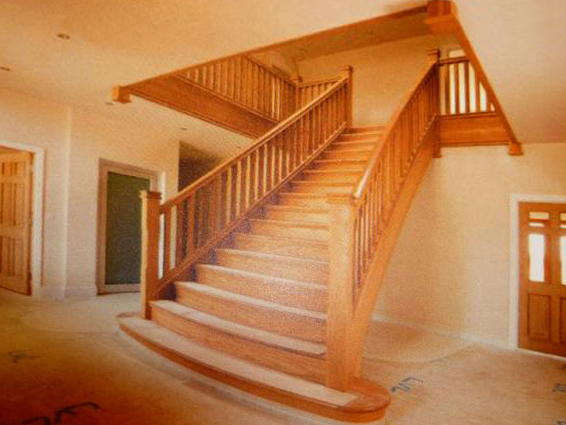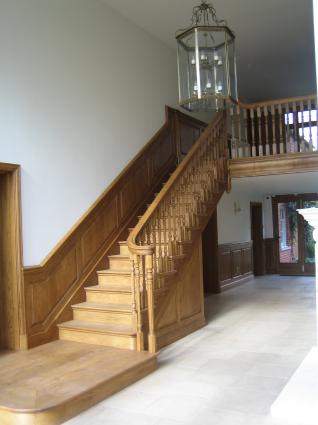Traditional Staircases – Classic Designs, Crafted to Last
Traditional. Classic. Timeless. At Meer-End, we celebrate the beauty of time-honoured joinery with our bespoke traditional staircases. Whether you’re restoring a period property or adding character to a new build, our handcrafted staircase designs are made to complement traditional interiors with elegance and authenticity.
From richly grained traditional wooden staircases to decorative detailing and heritage-inspired finishes, every piece is a statement of lasting quality. With Traditional stairs you’re spoilt for choice: closed and cut string staircases in a variety of materials and finishes, with our own range of turnings or metal balusters. Plus balustrades with newels or fully continuous. Come and see us at our workshop to work through the choices and designs you prefer.
Craftsmanship Rooted in Tradition
We believe a traditional staircase should be as practical as it is beautiful. Using solid hardwoods and classic design principles, our expert craftsmen create staircases that pay tribute to historic architecture – while ensuring every detail meets today’s standards.
Popular options include:
- Traditional Oak Staircases – durable, warm, and full of character
- Georgian and Victorian-style turned balusters and newel posts
- Elegant closed-string or cut-string designs
- Bespoke handrails and detailing to match existing woodwork
- Tapered or continuous handrails for a refined finish
Traditional Staircase Ideas & Inspiration
Need help visualising your dream staircase? Our team will guide you through a curated collection of traditional staircase ideas, from classic timber profiles to authentic joinery features and layout solutions.
Whether you want to match original mouldings or create a statement entrance with sweeping curves, we’re here to craft something timeless and unique to your home.
Why Choose Meer-End for Traditional Staircases?
- Handmade in the UK at our Warwickshire workshop
- Custom designs in oak, ash, or timber of your choice
- Seamless integration with heritage interiors
- Expert guidance from sketch to installation
With years of experience working on listed buildings and heritage renovations, we understand how to blend modern functionality with traditional charm.
Let’s Craft Your Traditional Staircase
Visit our joinery workshop or book a consultation to explore your options. From raw timber to hand-finished staircase, your project is in the hands of true craftsmen. Contact us to start planning your staircase today.
FAQs – Traditional Staircases
What’s the difference between traditional and contemporary staircases?
Traditional staircases feature classic detailing like turned spindles, closed strings, and rich hardwood finishes – perfect for period-style homes.
Can I replicate a historical staircase in my renovation?
Yes. We can match original features, profiles, and proportions to restore or recreate historic staircase designs.
Do you use solid wood?
Absolutely. We typically use oak, ash, or other hardwoods, selected for their strength and natural beauty.
Example Traditional Staircases
From luxury city homes to countryside conversions, Meer-End is trusted for delivering high-end contemporary staircase solutions across the UK. Whether you’re looking for a glass staircase, a statement contemporary spiral staircase, or a sleek design in natural oak, we’re here to help bring it to life. Book a visit to our joinery workshop or schedule a free consultation.
FAQ
What is a traditional staircase?
A traditional staircase is designed with timeless proportions, natural materials, and handcrafted details that bring warmth and character to a home. Unlike minimal modern staircases, a traditional design focuses on elegance, solid structure, and decorative features such as hand-carved balustrades, sweeping handrails, and classic timber finishes.
What makes a staircase “traditional” compared to modern designs?
A traditional staircase is defined by its craftsmanship and use of premium natural materials, most often timber. Traditional wooden staircases typically feature oak, beech, or walnut, combined with turned spindles, carved handrails, and decorative newel posts. In contrast, modern staircases lean toward glass, steel, and minimalist lines. A traditional design feels warm, substantial, and enduring — qualities many homeowners seek in a feature staircase.
What styles of traditional staircases are available?
There are many traditional staircase ideas to suit different properties. Options include straight staircases with landings, sweeping curved or half-turn designs, and grand L- or U-shaped layouts. Within these styles, details such as spindles, balustrades, and handrails can be fully customised. A traditional oak staircase with carved balusters creates a classic heritage look, while painted spindles with timber treads can introduce a fresher, more transitional feel.
Can a traditional staircase be designed to suit both period and contemporary homes?
Yes. A traditional staircase can be adapted to complement either a period property or a modern interior. In heritage homes, we often replicate original joinery or create a traditional wooden staircase that matches the character of the building. In contemporary homes, the same design principles can be paired with lighter finishes, glass balustrades, or painted timber to achieve a classic look with a modern edge.
What materials are used in a traditional staircase?
Most traditional staircases are crafted from hardwoods such as oak, beech, or walnut. A traditional oak staircase is particularly popular for its strength, durability, and natural beauty. Other materials can also be incorporated — from wrought iron spindles to decorative glass panels — but timber remains the hallmark of a traditional design.
Can you match a new staircase to existing woodwork or finishes in my home?
Yes. Our craftsmen can design a traditional wooden staircase that complements your existing joinery. We can match stair treads and handrails to flooring, replicate mouldings and profiles, or finish your staircase in the same stain or paint colour as doors, skirting, or panelling. This ensures your new staircase feels like a seamless part of your home.
Do you offer hand-carved balustrades and decorative detailing?
Yes. Many clients commissioning a traditional staircase choose bespoke details such as hand-carved balusters, ornate newel posts, or shaped handrails. These finishing touches bring individuality and craftsmanship to your staircase, and they can be designed to replicate historical joinery or create something unique to your home.
Can a traditional staircase be installed in an existing property?
Yes. A traditional staircase can be retrofitted into an existing property with careful planning. Whether replacing a tired staircase or redesigning an interior, our team ensures the new structure works with your available space, ceiling heights, and layout. Many homeowners choose to install a traditional oak staircase during a renovation to add long-term value and character.
Do traditional staircases comply with UK Building Regulations?
Yes. All of our traditional staircases are designed and built in line with UK Building Regulations, covering tread and riser dimensions, baluster spacing, and handrail requirements. This ensures your staircase is not only beautiful but also safe and structurally sound.
How long does it take to design and install a traditional staircase?
The timescale depends on the complexity of the project. A bespoke traditional wooden staircase typically requires a detailed design phase, workshop manufacturing, and skilled on-site installation. Most projects take several weeks from concept to completion, but every staircase is scheduled to balance craftsmanship with your project timeline.
How do you maintain a traditional staircase?
A traditional staircase requires only simple care. Regular cleaning with wood-safe products helps preserve the finish, and occasional refinishing may be needed for hardwoods such as oak. A traditional oak staircase is particularly low-maintenance, as its natural strength and durability ensure it will last for generations with minimal upkeep.
Can a traditional staircase include modern elements while retaining a classic look?
Yes. Many clients blend traditional staircase ideas with subtle modern touches. For example, oak treads and handrails may be combined with glass balustrades for a lighter look, or painted spindles can freshen the feel of a traditional wooden staircase. This approach maintains the character of tradition while ensuring the staircase complements a contemporary home.
